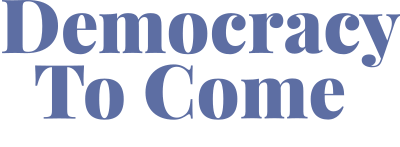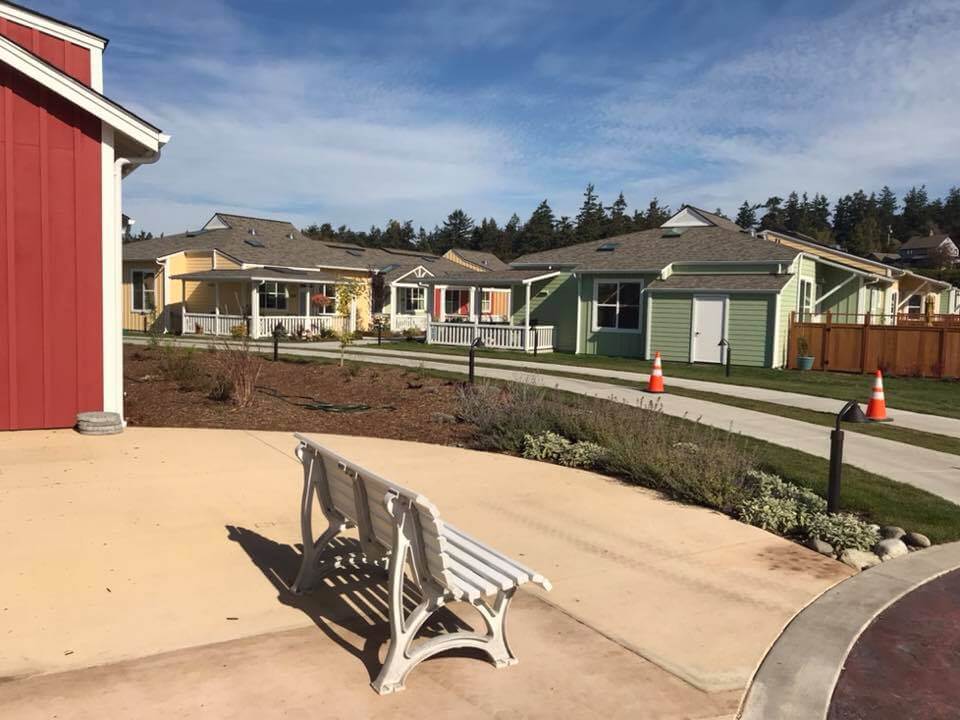The most inspiring visit of my ESRC project was to travel to the west coast of the USA to a housing community in Port Townsend – called Quimper Village. This was a co-housing community originally brought about by Pat Hundhausen, an incredibly inspiring woman who invited me to visit in late 2018. Pat had started out in her career teaching special education in big public suburban high schools but as she grew older “wanted a place that would be a community [that she and her husband and a wider community] grew older in which people knew each other and cared for each other”. Society tends to transfer folks in to unseen places to be looked after by people on minimum wage, and, far too often, to be either abused or neglected. In the West (and possibly even in the East), there is a tendency to simply ignore the creeping onset of loneliness and depression as we grow older and for a tacit understanding that others do so as well.
Led by Pat, in 2014, a collection of people decided that there was a better way of growing old and that this could be achieved as a collective community, in a beautiful setting in Port Townsend. The development of the site was not only meant as a collection of houses together but an attempt to ensure that the community worked collectively to look after each other, share out work, and make decisions collectively about how their lives would go forth and make sense together. My own experience of elderly communities was through my family – my mother and sister are care assistants for the elderly and my parents now manage an elderly community village in the UK. This was, by sheer coincidence, but it did provide me with something to compare to – and the comparison was quite fascinating once I understood the extent they had incorporated democracy in to the community.
[Insert picture 15 – Port Townsend view]

I arrived in Port Townsend via a 2 hour train ride (to Heathrow from my home in Doncaster), a ten hour flight to Seattle, a picturesque boat ride and an hour long bus through beautiful forests. It was a bloody long way. But on dragging my massive pink suitcase up towards the multicoloured houses I knew I was somewhere different to anywhere I had been before. I listened to stories of a community who had developed massively over the past 4 years and who had, like any community, encountered a range of problems and issues that had caused contention and disagreement. From what could be built where, what should be allowed within the community to how the space should be used to maximise the happiness of those living there. The residents realised from the outset that they would need a way of making decisions in a fair and democratic manner that included the voices of all effected. The implementation of sociocracy was a way of achieving this which at the point of visiting was an ongoing experiment.
The most fascinating discovery – which might be obvious to those living in co-housing – was that it seemed to be the smallest of issues that led to the largest disagreement. While life was harmonious on the whole, people had previously left the community over issues that (to outsiders) might seem small. Long deliberations took place over whether to purchase one thing or another and at first this seemed confusing to an outsider. The truth is, I was witnessing the boring and ugly parts of democracy that lead many to just throw their hands up and say “leave it to someone else” – but in the long run keep the community together. I sat in the circle watching folks deliberate and object or consent to issues that directly affected their personal lives. In most of our previous communities or jobs most (if not all) of all these things would be decided by others beyond our control. It was amazing to watch people set budgets within circles (and have these consented to) for the year, about how to improve the community and for a range of issues to be debated and disagreed to in a way that they otherwise wouldn’t.


I spoke to twenty of the residents about their experiences – each one a life story of people who had been in such a range of professions, from principals of high schools to girl scout leaders – and had ended up in Port Townsend in this community – a place where all of them could be listened to rather than (as they might be in other systems ignored). Pat Hundhausen had provided a wonderful community where this was possible – not certain but possible – and where people could grow old with dignity. Just a few weeks after leaving Pat passed away – a huge surprise to me as she still seemed so full of life – but the community which she helped flourish remains and is continuing to implement sociocracy. It is not a perfect, but this reflects one of the main findings of the book, democracy at work is not perfect – it is messy and does not always lead where we think it might. But it does give people a voice, and in this case it provides voice within a community that would be otherwise lost.






